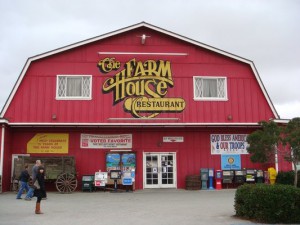
California’s top-two primary hasn’t lived up to reformers’ hopes
By John Sides February 11
California Assemblyman Tim Donnelly has taken some artistic liberties with the state flag. (Rich Pedroncelli/AP)
California’s top-two primary, instituted for the first time in 2012, has made many hopeful that it would encourage moderate candidates to run and thereby reduce political polarization. The early analyses of California’s experience have not born out those hopes. Now, a new round of research conducted after the 2014 election reexamines the primary’s impact — and reaches much the same conclusion. You can find this research in the new issue of the California Journal of Politics and Policy. Below is some of the research that bears most directly on the question of polarization. See the issue for much more.
Thad Kousser:
Did the new rules implemented by California’s top-two system change the electoral game in the statewide primaries of 2014? This article looks first at overall turnout dynamics before focusing on the closely contested races to gain a spot on the November ballot in the governor’s, secretary of state’s, and controller’s races. Drawing on an original analysis of polling data as well as interviews with candidates themselves, I find that the top-two shaped the field of candidates who entered the primary, the partisan ballot designations that they chose, and the campaign tactics that they employed. Yet the new rules did not, in the end, discernibly alter the outcomes of the 2014 primaries.
Doug Ahler, Jack Citrin, and Gabriel Lenz:
An experiment conducted by the authors (2014) found that the top-two primary first used in California in June 2012 failed to achieve its sponsors’ goal of helping ideologically moderate candidates win. This paper explores why. A primary reason is that voters are largely ignorant about the ideological orientation of candidates, including the moderates they would choose if proximity voting prevailed. We document this in congressional races, focusing on competitive contests with viable moderate candidates. Our results have a straightforward implication: for the top-two primary to mitigate polarization, moderate congressional candidates would have to inform voters about their moderation to a far greater degree.
Eric McGhee:
California has recently changed the way candidates are nominated in its primaries. The reform was designed in part to encourage cross-party collaboration and moderate the state’s policy agenda. In this paper, I look specifically at the impact of the reform on business regulation issues, as measured by the legislative scorecards of the California Chamber of Commerce. I find that Democrats, but not Republicans, have indeed tended to be more moderate on these issues both recently and under similar reform conditions over a decade ago. But it is difficult to find firm evidence that would credit the reform for these changes. Moreover the Chamber’s policy agenda as a whole is not clearly more successful under such periods of reform. Instead, this business agenda—and by extension, the willingness of Democrats to support it—seems tied solidly to unified or divided partisan control of government.
Jonathan Nagler:
California’s Top Two Primary in 2012 gave voters the chance to cross party lines to vote for the candidate of their choice in what was the equivalent of a two-stage election with run-off. The top two vote getters in each race, independent of party, proceeded to the general election. Using a panel survey design I examine the behavior of voters under this system at both the primary (first) stage and general election (second) stage. I estimate how many voters chose to cross party lines, and how many did so for strategic reasons. I then examine how voters behaved when faced with different scenarios in the general election regarding the availability of their preferred candidate, or any candidate representing their party. I find that surprisingly few voters crossed party lines, and relatively few who did so did so for strategic reasons. If such low levels of crossover continue, the impact of the top two primary on candidate ideology will likely be small. At the general election stage, voters who were faced with two candidates of the opposing party often chose to simply abstain from such races at a high rate.
John Sides is an Associate Professor of Political Science at George Washington University. He specializes in public opinion, voting, and American elections.
© 1996-2015 The Washington Post




